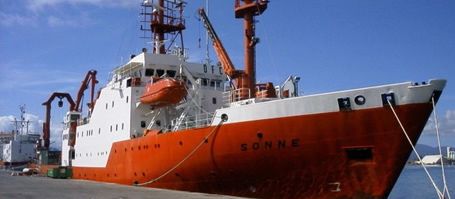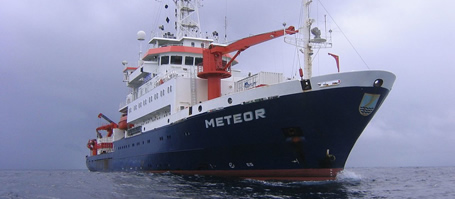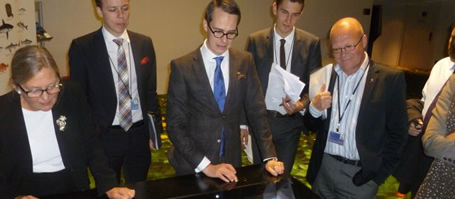The sea floor off the coast of New Zealand’s North Island is different where at many places gas bubbles are observed rising from the sediments. Many cold seeps that are sources of methane are found at the continental slope, which angles down almost directly from the coastal waters to a depth of 3000 metres. This is not surprising, as there are large deposits of gas hydrates below the sea floor. The difference here is that cold seeps are observed only at a few of the continental slopes with gas hydrates. Additionally, the cold seeps at the Hikurangi Margin, a deep sea trench off the east coast of New Zealand, demonstrate a wide variety of appearances and behaviour. „We want to better understand these variabilities, because they can tell us how and why methane vents evolve at the sea floor“, says Dr. Jörg Bialas of the Leibniz Institute of Marine Sciences (IFM-GEOMAR) in Kiel, Germany. He is the chief scientist of an expedition with the German research vessel SONNE at the Hikurangi Margin from the beginning of March to the end of April 2011.
During this cruise the scientists on board R/V SONNE will study the
sea floor and its cold seeps with geochemical and geophysical methods.
Among them are state-of-the-art technologies to generate three
dimensional images of the interior of the seafloor. „We already know
about these seeps from earlier expeditions in 2007“, says Dr Bialas,
“Previous knowledge about their variations will be augmented by using
dense nets of sensors and measurements.” In addition to the short-term
measurements during the cruise, comparison with earlier cruises will
provide additional information to study long-term variations.
The
Hikurangi Margin is a zone of tectonic activity, where the Pacific
Plate slides under the Australian Plate. “That’s another reason for us
to have a closer look at the cold seeps here, because we wonder if
there are correlations between the tectonic activity and the variety of
the cold seeps”, explains Dr Bialas. “The seeps will provide us with
evidence about the structure of the sediment layers and the processes
going on within them. This will also allow us to draw conclusions about
the risk of natural disasters like submarine slides”.
In addition to the scientists from Kiel, partners from the Federal Institute for Geosciences and Natural Resources (BGR), from the NIOZ (Texel, Netherlands) and the GNS (Lower Hutt, New Zealand) are participating in this fundamental research project, which is funded by the German Ministry for Education and Research.
Expedition at a glance:
SONNE-Expedition 214
- Topic: Cold seeps at the continental slope off the coast of New Zealand’s North Island
- Chief Scientist: Dr Jörg Bialas (IFM-GEOMAR)
- Start: 9th March 2011, Wellington (New Zealand)
- End: 22nd April 2011, Auckland (New Zealand)
Links:
Contact:
Dr Jörg Bialas, jbialas@ifm-geomar.de
Jan Steffen (Public Relation IFM-GEOMAR), Tel. 0431 600-2811
jsteffen@ifm-geomar.de
…



